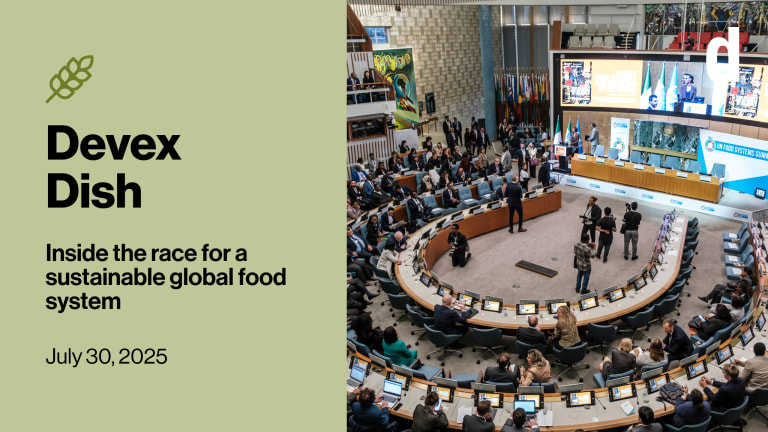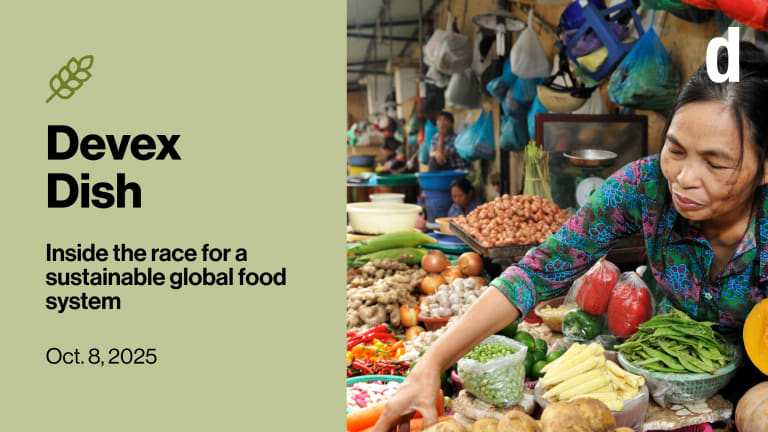
With the launch of the sustainable development goals now just months away, we have a unique and important opportunity to secure the commitment and support for proven and scalable interventions that can have a transformative impact in reducing malnutrition. Poor nutrition is one of the biggest global challenges of our time. Today, 2 billion people — that’s 1 in 3 people on the planet — suffer from micronutrient deficiency, otherwise known as “hidden hunger.”
The most common micronutrient deficiencies are vitamin A, iron, zinc, folic acid and iodine. While hidden hunger rarely shows visible signs in those who are affected, its consequences can be disastrous, leading to poor physical and mental health, increased child and maternal mortality and reduced cognitive development. Some of its most serious manifestations include spina bifida, night blindness and goiter, an abnormal neck swelling caused by the enlargement of the thyroid gland. The consequences are not limited to individuals. Hidden hunger impacts the health and productivity of whole societies, effectively trapping many in a vicious cycle of poverty.
Evidence over the past decade — including from two Lancet series on maternal and child nutrition — has shown that we already have a toolbox of highly effective solutions to tackle global malnutrition. These include the fortification of staple foods like flour, oil and rice with essential nutrients; support for exclusive breast-feeding; and closer interaction between agriculture and nutrition to promote dietary diversity. These interventions can be complemented by an integrated public health agenda that includes improved sanitation, immunization and malaria and parasite control.
Yet, time and again food fortification — adding small amounts of micronutrients such as vitamins and minerals to staple foods and condiments — has been shown to be one of the safest and most cost-effective measures to tackle hidden hunger on a large scale. By expanding its use we can help to eradicate hidden hunger and its devastating consequences.
Why fortify?
It reaches the most vulnerable with much-needed vitamins and minerals: Because many of the most vulnerable people in the world rely heavily on staple foods, food fortification has the ability to reach the poor and marginalized where other interventions cannot. This includes women and adolescent girls, who are the most critical groups from a nutrition standpoint.
It overcomes some of the inefficiencies of the global food system: In an ideal world everyone would have access to diverse diets, including a mix of fruits, vegetables and whole grains that provide all the nutrients we need. Unfortunately that ideal is still some way off. With large-scale food fortification micronutrients such as iodine, iron, zinc, calcium, and vitamins A, B and D are added to locally available and affordable foods. This means that fortified food does not require major shifts to local diets or changes to traditional cooking methods.
It’s extremely cost-effective: In 2008 food fortification was ranked by some of the world’s leading economists as one of the most cost-effective ways to help address the global malnutrition crisis. Iodizing salt, for example, can cost as little as 5-10 cents per person per year. The return on that investment is valued at more than $26, in the way of productivity and health care savings. In Jordan the cost of iron fortification is just 4 cents per capita per year, whereas the cost of treating anemia is $7.
Why do we need #FutureFortified?
To date, the Global Alliance for Improved Nutrition and its partners’ support for large-scale food fortification programs have contributed to reductions in neural tube defects in South Africa, reductions in iron deficiency anemia in Nigeria, Jordan and Morocco, and a near elimination of iodine deficiency disorders in China. But, we can do more to spread the positive effects of fortification.
On Sept. 9-11, 2015, GAIN will join the government of Tanzania in co-hosting the first global summit on food fortification, as part of a global effort to reinvigorate interest, awareness and investment in food fortification. Other co-conveners include the African Union, the Bill & Melinda Gates Foundation, UNICEF, U.S. Agency for International Development, the World Food Program, and World Health Organization. Through the Global Summit and #FutureFortified campaign, we and our partners will join together to secure the political will and required investment to scale up fortification efforts and put an end to hidden hunger.
To support #FutureFortified, visit our website, follow us on Twitter @FutureFortified and like our Facebook page.
#FutureFortified is a special online series exploring the impact and importance of food fortification to meet global development objectives. Join Devex — and our partner GAIN — in the conversation using #FutureFortified.








